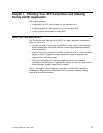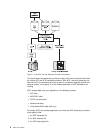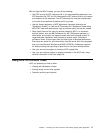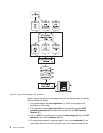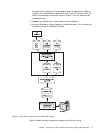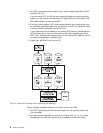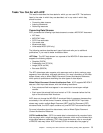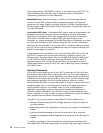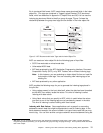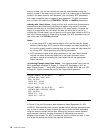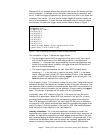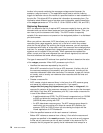using a page-definition (PAGEDEF) resource, in the same way as does PSF. For
more information about line data, refer to
Advanced Function Presentation:
Programming Guide and Line Data Reference
.
Mixed-Mode Data:
Mixed-mode data is a mixture of line-mode data, with the
inclusion of some AFP structured fields, composed-text pages, and resource
objects such as image, graphics, bar code, and text. For more information about
this data stream, refer to
Advanced Function Presentation: Programming Guide and
Line Data Reference
.
Unformatted ASCII Data:
Unformatted ASCII data is data that is generated in the
workstation environment and has not been formatted for printing. Unformatted
ASCII data is formatted by ACIF using a page definition resource. Unformatted
ASCII data is contrasted with the type of ASCII data that contains control
characters (or, escape sequences) for the IBM Proprinter and Quietwriter, and does
not need to be formatted by ACIF before printing with PSF for AIX. Unformatted
ASCII can also be submitted for printing with PSF for AIX without being converted
by ACIF, but the output format is predetermined (using a Proprinter emulation font
and 60 lines per page, for example).
A page definition can be created for use in an unformatted ASCII file to allow the
use of AFP functions such as varied print directions, multiple-up printing, and
different fonts in the output format. You can use IBM Page Printer Formatting Aid
for AIX (PPFA for AIX) to create your own page definitions. PPFA for AIX is a
separate feature of PSF for AIX that you can order. For information on how to
create page definitions using PPFA for AIX, refer to
IBM Page Printer Formatting
Aid: User's Guide
.
Indexing Documents
One of the principal tasks you can do with ACIF is indexing print files, which are
also known as documents. When indexing with ACIF, you can divide (segment) a
large print file into smaller, uniquely identifiable units, called
groups
, as defined by
the MO:DCA-named group structured fields. Using ACIF, you can divide the large
bank-statement application into the individual groups by inserting in the file
structured fields that define the group boundaries. A group is a named collection of
sequential pages, which, in this application, consists of the pages describing a
single customer's account. For example, when you print a bank-statement
application, you probably produce a large printout consisting of thousands of
individual customer statements. You can think of each of these statements as a
smaller, separate unit, each of which is uniquely identified by an account number or
other attributes such as date and Social Security number.
Using ACIF, you can also create an index object file, which enables you to:
Retrieve individual statements from storage, based on an account number or
any other attribute
More rapidly access the statements for viewing by, for example, the Workbench
Viewer.
Archive individual statements or the entire indexed print file for long-term
storage and subsequent data management and reprinting, even years after its
creation
In addition to building an index-information file containing structured fields (the
index object file
), ACIF also inserts strings of character data called
tags
in the print
10 ACIF User’s Guide




